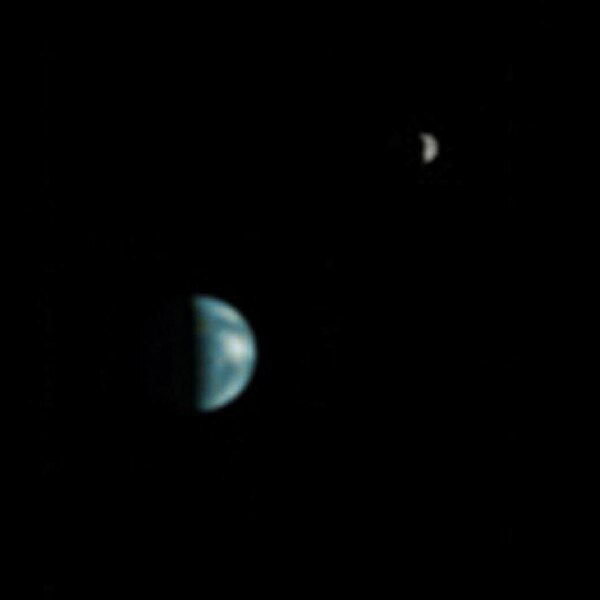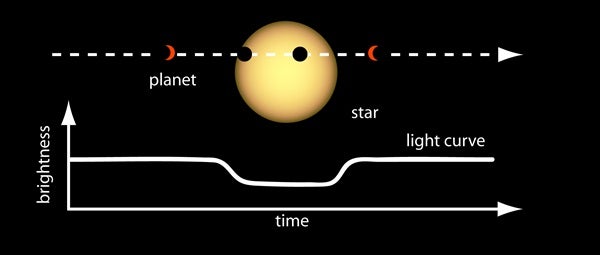Key Takeaways:
- Alien Observers: The study explores which distant exoplanets might observe Earth, offering insights into potential extraterrestrial awareness of our planet’s existence.
- Transit Detection: By analyzing transits, researchers identify exoplanets capable of witnessing Earth’s passage in front of the Sun, providing a unique perspective for distant observers.
- Atmospheric Analysis: Observing the dimming of starlight passing through exoplanet atmospheres allows astronomers to deduce atmospheric composition, potentially indicating the presence of life.
- Electromagnetic Signals: The search for radio waves from extraterrestrial civilizations remains ongoing, although conclusive evidence has yet to be found amidst signals potentially masked by human interference.
- Ethical Considerations: The possibility of Earth being discovered by other worlds prompts reflection on the implications and responsibilities associated with potential extraterrestrial contact.

A novel manuscript probes the potential discovery of Earth-like exoplanets. Such distant worlds may become targets in the quest for extraterrestrial intelligence (SETI).
Ever since the groundbreaking observation in 1992 of two rocky exoplanets orbiting a pulsar within the Virgo constellation, mankind has been cognizant of the existence of celestial bodies beyond our solar system. Today, aided by the diligent endeavors of astronomers and groundbreaking missions such as the now-defunct Kepler, our awareness encompasses over 4,000 confirmed exoplanets.
The detection of exoplanets orbiting far-off stars suggests that beings from other worlds could possibly observe Earth orbiting the Sun. Our diminutive azure globe might even feature on the roster of rocky exoplanets deemed suitable for sustaining life by an extraterrestrial stargazer.
Though speculative in nature, this scenario garners earnest consideration from astronomers. Through various scholarly works over the years, they have identified prospective exoplanets from which Earth might be observable. Now, armed with updated data from the comprehensive Gaia catalog compiled by the European Space Agency, two scholars have furnished what could be deemed the most refined list to date of celestial realms potentially spying on us.
The act of observing Earth from a distant vantage point
The genesis of this inquiry stemmed from fundamental queries, as articulated by Joshua Pepper, an astrophysicist affiliated with Lehigh University and co-author of the recent paper published in October within the pages of Monthly Notices of the Royal Astronomical Society.
“What if there existed sapient entities inhabiting another celestial body? And if their gaze were cast towards Earth, which stellar systems would afford them the opportunity to behold our planet?” ponders Pepper.
Leveraging datasets from Gaia and NASA’s Transiting Exoplanet Survey Satellite (TESS), Pepper, alongside Lisa Kaltenegger, director of the Carl Sagan Institute at Cornell University, embarked on a quest to pinpoint planets aligned with Earth’s orbital trajectory around the Sun. Such alignment would enable prospective alien observers to witness a slight diminution in the Sun’s luminosity whenever Earth traverses its path. Their investigation encompassed a distance of approximately 330 light-years, with certain stars excluded due to inadequate data, culminating in a compilation of roughly 1,000 stars suitably aligned with Earth’s orbit.
According to Pepper, the observation of a planet traversing its stellar host, colloquially known as a transit, currently stands as the foremost method for detecting exoplanets. Hence, it serves as a plausible means by which distant planets could potentially detect our presence.

Thus far, the researchers have pinpointed five exoplanets in close proximity to Earth, suggesting the hypothetical capability of extrasolar astronomers to observe us. From the perspective of these distant worlds, Earth would manifest as a minuscule shadow traversing across the face of our Sun.
While this tally represents a mere fraction of the myriad worlds dispersed across the cosmos, Pepper contends that their roster could serve as a prime directive for researchers engaged in the Search for Extraterrestrial Intelligence (SETI).
“This selection could serve as a focal point for SETI endeavors,” he posits. “Inhabitants of these planets would possess a unique vantage point from which to observe Earth.”
Earth, the enigmatic exoplanet
From the vantage point of several light-years distant, Earth would fail to evoke awe-inspiring vistas (barring the advent of advanced telescopic technology). Observers witnessing Earth’s transit as an exoplanet would not perceive our world as a lush oasis adorned in hues of blue, green, and tan, as depicted in close-range satellite imagery. Instead, it would merely register as an inert mass obstructing the solar radiance.
Nevertheless, astronomers glean invaluable insights from the subtle fluctuations in a planet’s transit across its parent star. These observations facilitate estimations of the planet’s dimensions, orbital velocity, and even its density, providing clues regarding its composition as either a gas giant akin to Jupiter or a terrestrial world akin to Earth. For instance, the five planets identified by Pepper and Kaltenegger are conjectured to be super-Earths, surpassing our planet in size yet dwarfed by Uranus and Neptune.
As a planet intercepts the luminous rays of its host star, astronomers seize a rare opportunity to scrutinize its atmosphere, if extant. When a slender sliver of starlight traverses the gaseous envelope enveloping the planet, it carries with it spectral signatures indicative of the atmospheric constituents.
“Upon emergence, this light bears the molecular fingerprint of the gases present in the atmosphere,” elucidates Pepper. Armed with this data, astronomers undertake the arduous task of deciphering the atmospheric composition of exoplanets. While formidable, this endeavor stands as one of the most promising avenues for detecting extraterrestrial life, owing to the potential presence of oxygen or other bioindicators that defy abiotic synthesis.
From the perspective of an alien astronomer, Earth would present a captivating spectacle as they dissect the intricate tapestry of our atmosphere. Elevated levels of oxygen, methane, carbon dioxide, and other gases would hint at the teeming biodiversity of our planet.
An even more compelling indicator of extraterrestrial life could emanate from electromagnetic emissions, such as the radio waves propagated by our communication infrastructure. These signals constitute the primary focus of SETI’s endeavors beyond our solar confines.
While such efforts have yielded tantalizing leads over the years, definitive evidence remains elusive. For instance, recent reports have surfaced regarding a promising signal detected by the Breakthrough Listen project emanating from Proxima Centauri. However, researchers remain cautious, attributing the signal’s origin primarily to anthropogenic interference.
Nonetheless, were extraterrestrial beings to direct an equivalent of the Green Bank Observatory towards Earth, they would bear witness to a planet pulsating with electromagnetic activity, providing incontrovertible evidence of our civilization’s technological prowess.
The necessity of Earth transiting across the solar disk to facilitate detection by other planets remains a pivotal aspect of Pepper’s research. Such silhouetting against the solar backdrop constitutes one of the most efficacious means of detection.
The desirability of our planet being discovered by another celestial body raises profound existential queries, transcending scientific inquiry alone


